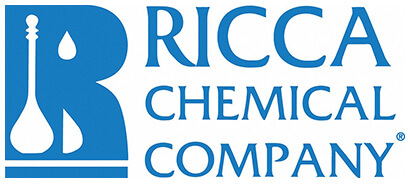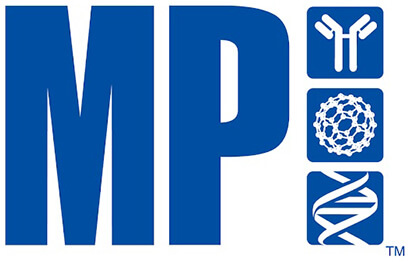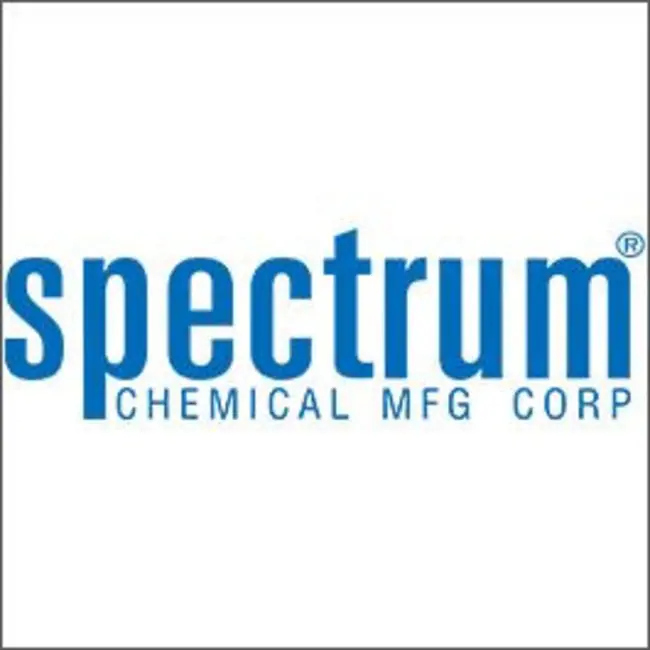Ambient
Showing 91301–91350 of 146505 results
-
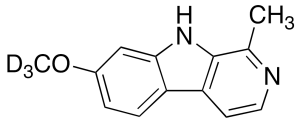
Harmine-d3
$1,662.04 Add to cart View Product DetailsMolecular Formula : C13H9D3N2O
-

Harmol
$54.34 Add to cart View Product DetailsMolecular Formula : C12 H10 N2 O
-

Harmol
$76.76 Add to cart View Product DetailsMolecular Formula : C12 H10 N2 O
-

Harmol
$94.01 Add to cart View Product DetailsMolecular Formula : C12 H10 N2 O
-
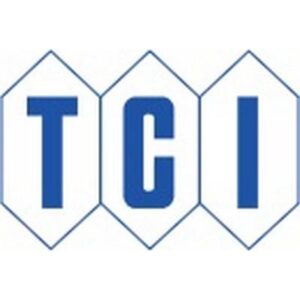
Harmol
$157.73 Add to cart View Product DetailsHarmol
-

Harmol
$624.52 Add to cart View Product DetailsHarmol
-

Harmol Hydrochloride Dihydrate
$155.25 Add to cart View Product DetailsMolecular Formula : C12 H10 N2 O . H Cl . 2 H2 O
-

Harmol Hydrochloride Dihydrate
$246.68 Add to cart View Product DetailsMolecular Formula : C12 H10 N2 O . H Cl . 2 H2 O
-

Harmol Hydrochloride Dihydrate
$453.68 Add to cart View Product DetailsMolecular Formula : C12 H10 N2 O . H Cl . 2 H2 O
-
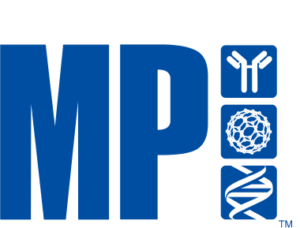
Harmol, NeuroPure
$52.87 Add to cart View Product DetailsHarmol, NeuroPure
-

Harmol, NeuroPure
$356.82 Add to cart View Product DetailsHarmol, NeuroPure
-

Harpagide (90%)
$136.28 Add to cart View Product DetailsMolecular Formula : C15 H24 O10
-

Harpagide (90%)
$1,043.63 Add to cart View Product DetailsMolecular Formula : C15 H24 O10
-

Harpagoside
$119.89 Add to cart View Product DetailsMolecular Formula : C24 H30 O11
-

Harpagoside
$1,085.89 Add to cart View Product DetailsMolecular Formula : C24 H30 O11
-

Harringtonin
$163.01 Add to cart View Product DetailsMolecular Formula : C28 H37 N O9
-

Harringtonin
$242.36 Add to cart View Product DetailsMolecular Formula : C28 H37 N O9
-

Harringtonin
$362.25 Add to cart View Product DetailsMolecular Formula : C28 H37 N O9
-
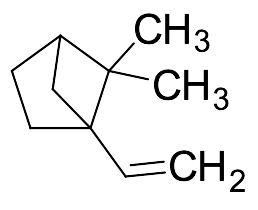
Hashishene
$165.60 Add to cart View Product DetailsMolecular Formula : C10 H16
-

Hashishene
$740.89 Add to cart View Product DetailsMolecular Formula : C10 H16
-

Hashishene
$1,338.60 Add to cart View Product DetailsMolecular Formula : C10 H16
-

HATU
$114.71 Add to cart View Product DetailsMolecular Formula : C10 H15 N6 O . F6 P
-

HATU
$237.19 Add to cart View Product DetailsMolecular Formula : C10 H15 N6 O . F6 P
-

HATU
$499.39 Add to cart View Product DetailsMolecular Formula : C10 H15 N6 O . F6 P
-

HAWK OSER SALT MIXTURE No.3
$134.33 Add to cart View Product DetailsHAWK OSER SALT MIXTURE No.3
-

HAWK OSER SALT MIXTURE No.3
$385.25 Add to cart View Product DetailsHAWK OSER SALT MIXTURE No.3
-

HAWK OSER SALT MIXTURE No.3
$1,863.75 Add to cart View Product DetailsHAWK OSER SALT MIXTURE No.3
-
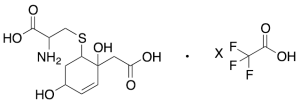
Hawkinsin TFA Salt
$231.15 Add to cart View Product DetailsMolecular Formula : C11H17NO6S • x(C2HF3O2)
-

Hawkinsin TFA Salt
$418.31 Add to cart View Product DetailsMolecular Formula : C11H17NO6S • x(C2HF3O2)
-

Hawkinsin TFA Salt
$907.35 Add to cart View Product DetailsMolecular Formula : C11H17NO6S • x(C2HF3O2)
-
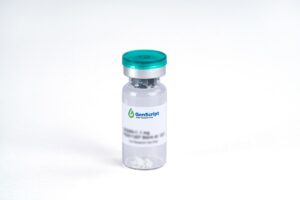
HB-EGF, Human
$737.44 Add to cart View Product DetailsProheparin-binding EGF-like growth factor (HB-EGF), also known as DTR, DTS and HEGFL, is a member of the EGF family of mitogens. It is expressed in macrophages, monocytes, endothelial cells and muscle cells. HB-EGF signals through the EGF receptor to stimulate the proliferation of smooth muscle cells, epithelial cells and keratinocytes. Compared to EGF, HB-EGF binds to the EGF receptor with a higher affinity and has been shown to bemore mitogenic, likely due to its ability to bind to heparin and heparin sulfate proteoglycans. HB-EGF has also been reported to act as a diphtheria toxin receptor, mediating endocytosis of the bound toxin. Heparin-binding EGF-like growth factor has been shown to interact with NRD1, Zinc finger and BTB domain-containing protein 16 and BAG1.
-
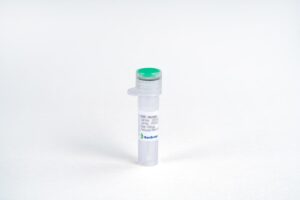
HB-EGF, Human
$76.76 Add to cart View Product DetailsProheparin-binding EGF-like growth factor (HB-EGF), also known as DTR, DTS and HEGFL, is a member of the EGF family of mitogens. It is expressed in macrophages, monocytes, endothelial cells and muscle cells. HB-EGF signals through the EGF receptor to stimulate the proliferation of smooth muscle cells, epithelial cells and keratinocytes. Compared to EGF, HB-EGF binds to the EGF receptor with a higher affinity and has been shown to bemore mitogenic, likely due to its ability to bind to heparin and heparin sulfate proteoglycans. HB-EGF has also been reported to act as a diphtheria toxin receptor, mediating endocytosis of the bound toxin. Heparin-binding EGF-like growth factor has been shown to interact with NRD1, Zinc finger and BTB domain-containing protein 16 and BAG1.
-

HB-EGF, Human
$29.33 Add to cart View Product DetailsProheparin-binding EGF-like growth factor (HB-EGF), also known as DTR, DTS and HEGFL, is a member of the EGF family of mitogens. It is expressed in macrophages, monocytes, endothelial cells and muscle cells. HB-EGF signals through the EGF receptor to stimulate the proliferation of smooth muscle cells, epithelial cells and keratinocytes. Compared to EGF, HB-EGF binds to the EGF receptor with a higher affinity and has been shown to bemore mitogenic, likely due to its ability to bind to heparin and heparin sulfate proteoglycans. HB-EGF has also been reported to act as a diphtheria toxin receptor, mediating endocytosis of the bound toxin. Heparin-binding EGF-like growth factor has been shown to interact with NRD1, Zinc finger and BTB domain-containing protein 16 and BAG1.
-

HB-EGF, Human
$737.44 Add to cart View Product DetailsProheparin-binding EGF-like growth factor (HB-EGF), also known as DTR, DTS and HEGFL, is a member of the EGF family of mitogens. It is expressed in macrophages, monocytes, endothelial cells and muscle cells. HB-EGF signals through the EGF receptor to stimulate the proliferation of smooth muscle cells, epithelial cells and keratinocytes. Compared to EGF, HB-EGF binds to the EGF receptor with a higher affinity and has been shown to bemore mitogenic, likely due to its ability to bind to heparin and heparin sulfate proteoglycans. HB-EGF has also been reported to act as a diphtheria toxin receptor, mediating endocytosis of the bound toxin. Heparin-binding EGF-like growth factor has been shown to interact with NRD1, Zinc finger and BTB domain-containing protein 16 and BAG1.
-

HB-EGF, Human
$43.13 Add to cart View Product DetailsProheparin-binding EGF-like growth factor (HB-EGF), also known as DTR, DTS and HEGFL, is a member of the EGF family of mitogens. It is expressed in macrophages, monocytes, endothelial cells and muscle cells. HB-EGF signals through the EGF receptor to stimulate the proliferation of smooth muscle cells, epithelial cells and keratinocytes. Compared to EGF, HB-EGF binds to the EGF receptor with a higher affinity and has been shown to bemore mitogenic, likely due to its ability to bind to heparin and heparin sulfate proteoglycans. HB-EGF has also been reported to act as a diphtheria toxin receptor, mediating endocytosis of the bound toxin. Heparin-binding EGF-like growth factor has been shown to interact with NRD1, Zinc finger and BTB domain-containing protein 16 and BAG1.
-

HB-EGF, Human
$90.56 Add to cart View Product DetailsProheparin-binding EGF-like growth factor (HB-EGF), also known as DTR, DTS and HEGFL, is a member of the EGF family of mitogens. It is expressed in macrophages, monocytes, endothelial cells and muscle cells. HB-EGF signals through the EGF receptor to stimulate the proliferation of smooth muscle cells, epithelial cells and keratinocytes. Compared to EGF, HB-EGF binds to the EGF receptor with a higher affinity and has been shown to bemore mitogenic, likely due to its ability to bind to heparin and heparin sulfate proteoglycans. HB-EGF has also been reported to act as a diphtheria toxin receptor, mediating endocytosis of the bound toxin. Heparin-binding EGF-like growth factor has been shown to interact with NRD1, Zinc finger and BTB domain-containing protein 16 and BAG1.
-

HB-EGF, Human
$1,030.69 Add to cart View Product DetailsProheparin-binding EGF-like growth factor (HB-EGF), also known as DTR, DTS and HEGFL, is a member of the EGF family of mitogens. It is expressed in macrophages, monocytes, endothelial cells and muscle cells. HB-EGF signals through the EGF receptor to stimulate the proliferation of smooth muscle cells, epithelial cells and keratinocytes. Compared to EGF, HB-EGF binds to the EGF receptor with a higher affinity and has been shown to bemore mitogenic, likely due to its ability to bind to heparin and heparin sulfate proteoglycans. HB-EGF has also been reported to act as a diphtheria toxin receptor, mediating endocytosis of the bound toxin. Heparin-binding EGF-like growth factor has been shown to interact with NRD1, Zinc finger and BTB domain-containing protein 16 and BAG1.
-

HB-EGF, Human
$68.14 Add to cart View Product DetailsProheparin-binding EGF-like growth factor (HB-EGF), also known as DTR, DTS and HEGFL, is a member of the EGF family of mitogens. It is expressed in macrophages, monocytes, endothelial cells and muscle cells. HB-EGF signals through the EGF receptor to stimulate the proliferation of smooth muscle cells, epithelial cells and keratinocytes. Compared to EGF, HB-EGF binds to the EGF receptor with a higher affinity and has been shown to bemore mitogenic, likely due to its ability to bind to heparin and heparin sulfate proteoglycans. HB-EGF has also been reported to act as a diphtheria toxin receptor, mediating endocytosis of the bound toxin. Heparin-binding EGF-like growth factor has been shown to interact with NRD1, Zinc finger and BTB domain-containing protein 16 and BAG1.
-

HB-EGF, Human
$155.25 Add to cart View Product DetailsProheparin-binding EGF-like growth factor (HB-EGF), also known as DTR, DTS and HEGFL, is a member of the EGF family of mitogens. It is expressed in macrophages, monocytes, endothelial cells and muscle cells. HB-EGF signals through the EGF receptor to stimulate the proliferation of smooth muscle cells, epithelial cells and keratinocytes. Compared to EGF, HB-EGF binds to the EGF receptor with a higher affinity and has been shown to bemore mitogenic, likely due to its ability to bind to heparin and heparin sulfate proteoglycans. HB-EGF has also been reported to act as a diphtheria toxin receptor, mediating endocytosis of the bound toxin. Heparin-binding EGF-like growth factor has been shown to interact with NRD1, Zinc finger and BTB domain-containing protein 16 and BAG1.
-

HB-EGF, Mouse
$1,035.00 Add to cart View Product DetailsHeparin-binding EGF-like growth factor (HB-EGF) is a member of the EGF family of proteins. HB-EGF-like growth factor is synthesized as a membrane-anchored mitogenic and chemotactic glycoprotein. An epidermal growth factor produced by monocytes and macrophages, due to an affinity for heparin is termed HB-EGF. It has been shown to play a role in wound healing, cardiac hypertrophy and heart development and function. The transmembrane form of HB-EGF is the unique receptor for diptheria toxin and functions in juxtacrine signaling in cells. Both forms of HB-EGF participate in normal physiological processes and in pathological processes including tumor progression and metastasis, organ hyperplasia, and atherosclerotic disease. HB-EGF can bind two locations on cell surfaces, heparan sulfate proteoglycans and EGF-receptor effecting cell to cell interactions.
-

HB-EGF, Mouse
$68.14 Add to cart View Product DetailsHeparin-binding EGF-like growth factor (HB-EGF) is a member of the EGF family of proteins. HB-EGF-like growth factor is synthesized as a membrane-anchored mitogenic and chemotactic glycoprotein. An epidermal growth factor produced by monocytes and macrophages, due to an affinity for heparin is termed HB-EGF. It has been shown to play a role in wound healing, cardiac hypertrophy and heart development and function. The transmembrane form of HB-EGF is the unique receptor for diptheria toxin and functions in juxtacrine signaling in cells. Both forms of HB-EGF participate in normal physiological processes and in pathological processes including tumor progression and metastasis, organ hyperplasia, and atherosclerotic disease. HB-EGF can bind two locations on cell surfaces, heparan sulfate proteoglycans and EGF-receptor effecting cell to cell interactions.
-

HB-EGF, Mouse
$155.25 Add to cart View Product DetailsHeparin-binding EGF-like growth factor (HB-EGF) is a member of the EGF family of proteins. HB-EGF-like growth factor is synthesized as a membrane-anchored mitogenic and chemotactic glycoprotein. An epidermal growth factor produced by monocytes and macrophages, due to an affinity for heparin is termed HB-EGF. It has been shown to play a role in wound healing, cardiac hypertrophy and heart development and function. The transmembrane form of HB-EGF is the unique receptor for diptheria toxin and functions in juxtacrine signaling in cells. Both forms of HB-EGF participate in normal physiological processes and in pathological processes including tumor progression and metastasis, organ hyperplasia, and atherosclerotic disease. HB-EGF can bind two locations on cell surfaces, heparan sulfate proteoglycans and EGF-receptor effecting cell to cell interactions.
-

HbA1c (4G1), mAb, Mouse
$78.49 Add to cart View Product DetailsGlycated hemoglobin (HbA1c) is formed by hemoglobin’s exposure to plasma glucose in a non-enzymatic process. As the average amount of plasma glucose increases, the fraction of HbA1c scales up. HbA1c reflects average plasma glucose over the previous eight to twelve weeks and it can be used as a marker to measure long-term blood glucose levels. HbA1c test is routinely performed in people with type 1 and type 2 diabetes to evaluate how well diabetes is controlled. The normal range for HbA1c level is less than 6%.
-

HbA1c (4G1), mAb, Mouse
$784.88 Add to cart View Product DetailsGlycated hemoglobin (HbA1c) is formed by hemoglobin’s exposure to plasma glucose in a non-enzymatic process. As the average amount of plasma glucose increases, the fraction of HbA1c scales up. HbA1c reflects average plasma glucose over the previous eight to twelve weeks and it can be used as a marker to measure long-term blood glucose levels. HbA1c test is routinely performed in people with type 1 and type 2 diabetes to evaluate how well diabetes is controlled. The normal range for HbA1c level is less than 6%.
-

HbA1c (4G1), mAb, Mouse
$6,641.25 Add to cart View Product DetailsGlycated hemoglobin (HbA1c) is formed by hemoglobin’s exposure to plasma glucose in a non-enzymatic process. As the average amount of plasma glucose increases, the fraction of HbA1c scales up. HbA1c reflects average plasma glucose over the previous eight to twelve weeks and it can be used as a marker to measure long-term blood glucose levels. HbA1c test is routinely performed in people with type 1 and type 2 diabetes to evaluate how well diabetes is controlled. The normal range for HbA1c level is less than 6%.
-
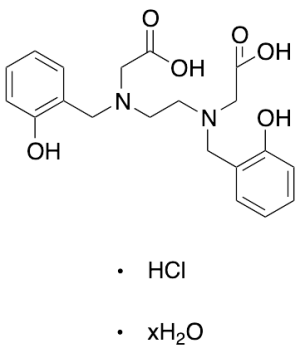
HBED Monohydrochloride Hydrate (>90%)
$56.06 Add to cart View Product DetailsMolecular Formula : C20 H24 N2 O6 . H Cl . x(H2 O)
-

HBED Monohydrochloride Hydrate (>90%)
$79.35 Add to cart View Product DetailsMolecular Formula : C20 H24 N2 O6 . H Cl . x(H2 O)
-
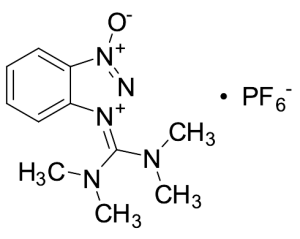
HBTU
$51.75 Add to cart View Product DetailsMolecular Formula : C11H16F6N5OP
-

HBTU
$67.28 Add to cart View Product DetailsMolecular Formula : C11H16F6N5OP
-
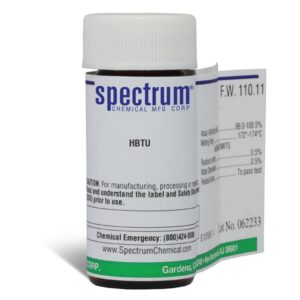
HBTU
$78.29 Add to cart View Product DetailsHBTU


